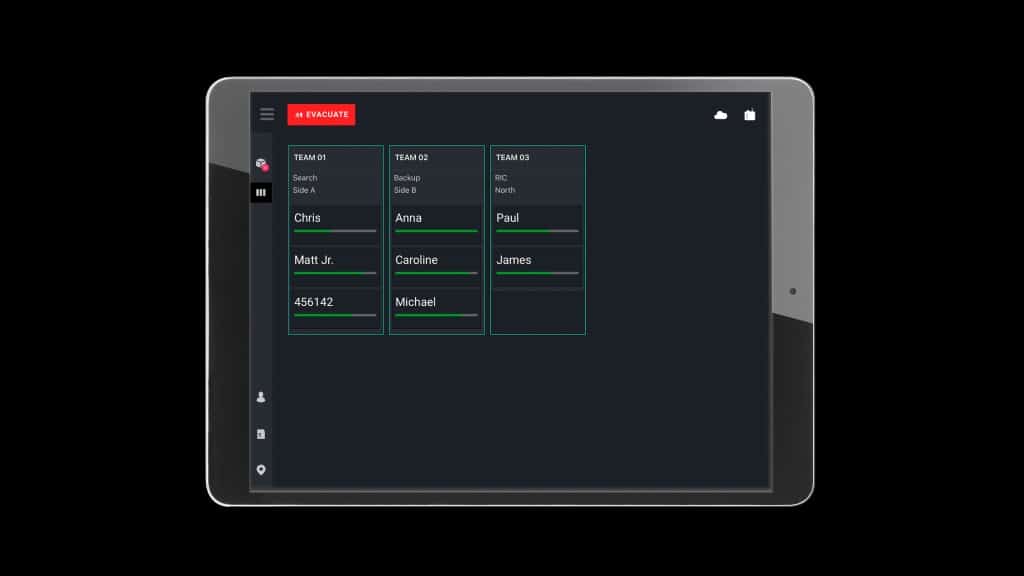The power of the data
- January 8, 2024
- 8:01 am


Iain Hoey
Share this content
Matt Quigley, MSA Safety Senior Product Platform Manager for Connected Firefighter, highlights where the use of data can have an impact in the fire service.
Data is quickly becoming a valuable asset to improve fire brigade operations.
When looking at emerging technologies, data can play an important role in understanding how firefighters operate on scene and how their safety equipment performs.
The current landscape when it comes to data use in the fire service is something we see as a quickly emerging opportunity.
We see it as a way to enhance the products firefighters are using and to collect information about the environment they’re being exposed to.
Ultimately, it’s the data from these products that can help inform MSA on how to build products that are best suited for those environments.
But to start, we must look at where the fire service is right now.
The fire service is essentially being called upon to do more with the same or less resources.
This can vary in severity across the globe, but overall, that’s the general trend.
It’s our intent to use data and technology to essentially make fire departments more capable and efficient in three primary areas.
- The first is the people: It’s helping to make firefighters safer with new technological tools.
- The second is products: We’re developing a lot of functionality that leverages technology and data to inform maintenance procedures to make the product last longer and to be less burdensome to maintain.
- The third is processes: We’re collecting information on firefighter behavior to inform departments of additional training opportunities and to make them safer by bringing awareness to their behaviors.
When focusing on these three areas, there is a need to accomplish the goals of collecting this data to ultimately return it to fire services and enhance their operations.
One of the primary challenges is integrating sensing and connectivity technology while not adding weight or ergonomic burden to the firefighter.
As a manufacturer, we research the optimal technology integration opportunities across the full suite of firefighter PPE including fire helmets, fire protective clothing, breathing apparatus, as well as technological tools such as thermal imaging cameras.
It is also important to build robustness in the connectivity networks that transmit data from the firefighter to the cloud.
Firefighters respond to emergencies in a variety of buildings, environments, and locations and typically one technology is not sufficient to maintain stable connection in every scenario.
At MSA, we deploy multiple and redundant connectivity networks to ensure consistent connection if one pathway were to become severed.
Analytics
It is critical to build intuitively deployed technology and data analytics tools for it to be adopted at scale across the global fire service.
It is a necessity for sensing and connectivity technology to be instantly and automatically deployed as a firefighter’s effort and attention are focused on responding to the emergency once arriving on scene.
Additionally, the software an incident commander will use to manage fireground operations needs to be built with a focus on intuitive user interface design.
We have a large and growing user experience team that strives to make the use of product as second-nature as possible.
Apple’s design of the iPad is a great example of this approach.
There’s a tremendous amount of connectivity and technological capability, but it’s very easy to use.
Those are the guiding principles we will have to follow for adoption to take place at scale.
When we think about firefighters deploying on scene, there’s a key job that needs to be done and worrying about technology and connectivity shouldn’t be a part of that.
We envision data being used to enhance the fire service in the future, and we’re particularly excited about how historical data can become increasingly valuable over time.
Initially when you’re putting a product into service, the available data is very limited.
Over months and years, the data set continues to grow, and we are able to develop a deeper understanding of trends and insights into how customers are actually using each product.
Understanding historical trends allows us to approach our goal of offering predictive maintenance.
Our goal is to ensure our customer’s products are always ready for use.
For example, we expect to be able to predict when parts are wearing and offer a replacement before it fails, extending the useful life of the equipment.
For us, the aspect of increasing value over time as customers continue to use their equipment is extremely important and exciting.
Physiological monitoring
One area that excites us greatly regarding data capabilities is physiological monitoring, which we are eager to explore in the future.
It’s very much core to our mission for protecting the firefighter and a space where emerging technologies are proving to be very promising.
That can be especially critical in places like the Middle East, where you have first responders working in incredibly hot environments.
We are at the very early stages – it’s a topic that we’re talking with fire departments and civil defence units to gauge interest.
We’re still doing research, and we believe you’ll continue to see more movement like this across the industry as it relates to the impact of heat stress on workers and firefighters.
Having a solution that can immediately alert of a biometric issue, especially if there’s an extreme environment like you have in Dubai, can be beneficial.
An important thing to recognise is that no two people are the same biologically.
The solutions that are of interest to MSA focus on building a baseline for the individual firefighter that can be used as a reference throughout their career.
This allows us to have tailored solutions as opposed to generic thresholds that may not be applicable for everyone in the brigade.

